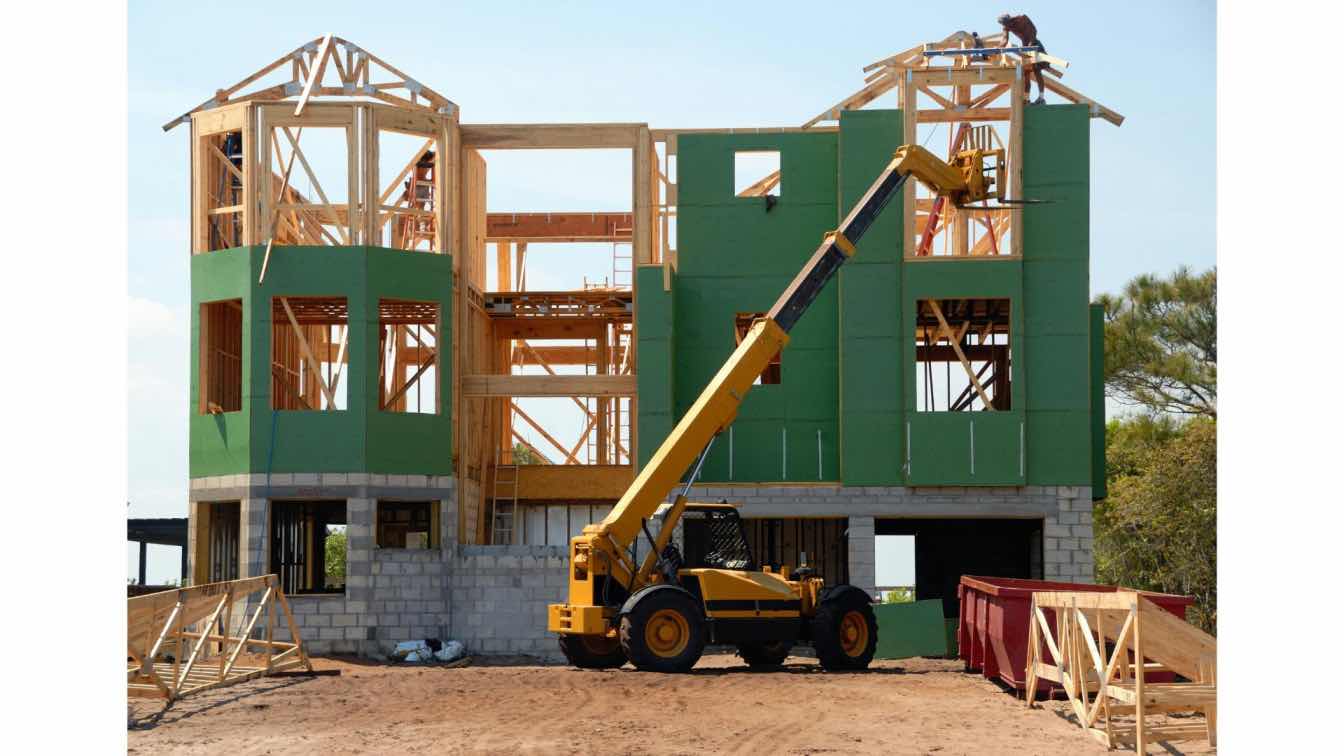Architecture and construction are the fields that have recently undergone significant changes owing to the action of the forces of globalization. Architects and their firms need to be aware of how the globalization of economies affects what they do: they design buildings and spaces all over the globe, incorporate new technologies in their work, engage in cross-border partnerships, and consider the local customs and traditions in their designs. In the same way, the various improvements in techniques and materials used in the construction of buildings also extended to an international level. In this blog post, I would like to focus on some of the significant aspects of how globalization has impacted the architectural and construction industry.
A synopsis of the phenomenon of the Internationalization of Architectural Firms
In the past, most architectural firms used to serve only local clients in their own countries and cities. Today, there are many large architecture companies, and they have branches in different countries, carrying out projects all around the world. For instance, HOK, Gensler, and Perkins Eastman are major firms that have offices in more than thirty countries, spread across several continents. This is because they can source international talent and place the talent as and where they wish. It also allows them to easily undertake work outside of their home country; be it a corporate office in China or a commercial complex in Saudi Arabia. It shows that they have multicultural teams, that are capable of combining different design styles.
It is still possible that some smaller, construction estimating companies specialized companies still concentrate geographically. But having an international portfolio is more desirable, and perhaps more of a standard requirement for top practitioners and offices. Other noteworthy incentives include the Pritzker Prize and other international awards promoting global awareness as well as sites that display architects and their creations spanning numerous countries. These changes affect how architecture firms work, how they interact with their counterparts, and even how they think about designs.
Cross-Border Knowledge Transfer
It also plays another important role in transferring knowledge and know-how across borders since many architectural firms have multi-national projects and/or offices. The international teams combine design strategies, engineering principles as well as construction techniques across different geographical locations and regions. This is compounded by the fact that the modern world employs the use of digital communication networks, which enable people to collaborate and coordinate in an instant.
Firms disseminate their knowledge around the world – a firm that is credited with modern hospitals can construct sophisticated medical facilities in other nations. Of course, this transfer is not only one-way but operates in multiple directions. For example, Dubai has not only explored different construction technologies to build large structures but also out of the desert climate. Businesses across the globe adopt these advances in materials, environmental control, and mechanical systems. Knowledge transfers through personnel as well: This of course is in a way since architects trained outside the country only get to introduce such concepts when they return to firms within the country.
Responding to Local Contexts
Surprisingly though, this has also led to more sensitivity to the cultural contexts of different countries through the efforts of international architectural firms. Therefore, as firms operate in more areas and embrace variety, they contend with environments, adjusting designs instead of imposing a solution.
For instance, a firm from the USA constructing a corporate office in Jakarta, Indonesia such as Citi, will adopt some Indonesian architectural details and designs as well as consider the Indonesian climate. Essential choices about the building forms, internal organization, materials, and gardens pay attention to local conditions. Lastly, the various representations through the use of signs and graphic designing also relate to place. Moreover, adapting the layout to the local construction legislation and standards contributes to the integration of the design just as well.
Software applications such as BIM help in placing buildings under consideration in the right context across regions. As a basic structure, design elements are easily modifiable, thus being relevant to the local context applicable to different areas. Local subsidiary firms act as a tool to aid international firms in perceiving and meeting the requirements of the location. They also ascertain that solutions correspond with clients’ demands in the case of organizations that employ dedicated design managers internationally.
The subject of globalization in building materials and methods
Technology, such as CAD services has also had an impact on construction methods and materials used in construction projects. Originally, most of the structures involved materials that were obtained from around – stones, woods, mud, and other Building methods as well, grown locally. Today, both the materials and the methods travel quickly around the world.
In terms of the materials, due to the early stages of the modern Industrial Revolution, it was possible to produce construction elements en masse. What previously happened through international supply chains, now gets done post-war through global supply chains. For instance, the buildings can be constructed from modular steel members, prefabricated trusses, and metal roofing panels, which are assembled at any location. Cement and concrete components are also familiar to international trade as building materials. Although concrete from local sources remained predominant, the technologies of the mix and reinforcement systems emerged on the international scene.
Other innovative composite materials that also transfer from one country to another are those that are used in façade systems such as ethylene tetrafluoroethylene (ETFE). The fact that it is lightweight and flexible which makes it durable was first used in Japan and Germany – today it constructs translucent building envelopes on a global scale. Thus, various other items such as advanced glazing, insulating products, waterproof membranes, etc. find similar high levels of penetration. It follows that buildings currently in use are fairly homogeneous in the interior materials they contain.
Technology in construction has also not remained stagnant but has also gone international. Pour-in-place concrete became popular due to international contractors and its ability to be affixed economically in any location. Tower cranes, excavators, and generators have now become instruments that allow fast construction work wherever it may be. Prefabrication, modularization, and offsite fabrication also increase according to the manufacturing and shipping improvements theses.
Shared Innovation Culture
The sharing of knowledge is the fundamental basis for distributing information, materials, and techniques across the globe. Engineers and builders use conferences as a practice to communicate and demonstrate technical competency through exhibitions (Expos) and competitions. This indicates that contracting firms assess global demand in advance and make preparations to meet the same. Innovations are taken to worldwide markets within a short period when dissemination is fast.
A perfect example of a shared innovation culture is cross-laminated timber (CLT) as a construction material. This is an engineered wood product that was developed in Europe but has gained acceptance in other parts of the world as a construction material for high-rise buildings. This provides sustainability, cost, and construction rate advantages that have relevance in today’s world. Through readily available information and supplier connections explain how other adopters took up CLT promptly in Canada, Australia, USA. Global platforms, therefore, are responsible for the advancement of a society’s well-being.
Localization Within Globalization
In essence, the effects of globalization on architecture are based on the concept of globalization whereby people share ideas and resources on how to develop their world across the globe. However, instead of dictating standardization it also encourages adaptation and differentiation on a global platform. Through the incorporation of local characteristics, various international architects provide designs that meet local conditions while enhancing construction in all parts of the world.
To many extents, it opened the possibility and potential of what could be done in architecture and building at an international level. Rather than each place developing ideas independently, the extended global creative collective encourages each other to improve the built landscape together. There is a chance for a sustainable, contextual, and innovative construction future at the global level by integrating international approaches and local knowledge.
Intensification of design and construction interdependence is therefore a tale of mutual exchange, not of hegemonic imposition. Architecture and engineering remain a constant practice for construction estimators, engineers, and builders globally addressing the need for shelter, practice integrates ideas across borders while situating projects in their locales, contexts, and environments. The process of a search for ways to combine the local and the global continues but it becomes more dynamic and more diverse.
Conclusion
In sum, globalization has been the cause of many changes in architecture and construction in different parts of the world. While the firms internationalize they are located in different environment contexts and share knowledge around the world. It observes site specificity through cultural responsiveness, climate sensitivity, and the use of local materials and materials sourced within the project regions. Construction products and processes are also easily transported and communicated globally due to trade and information transfer.
Taken together, these trends suggest a global but fragmented construction estimating services industry that is connected yet specific to its locality. When architects have access to global openness and innovation, they can design excellent, culturally sensitive buildings for communities globally. Finally, globalization has opened up greater opportunities and challenges where we, being architects, designers, and builders are constructing our global home.





